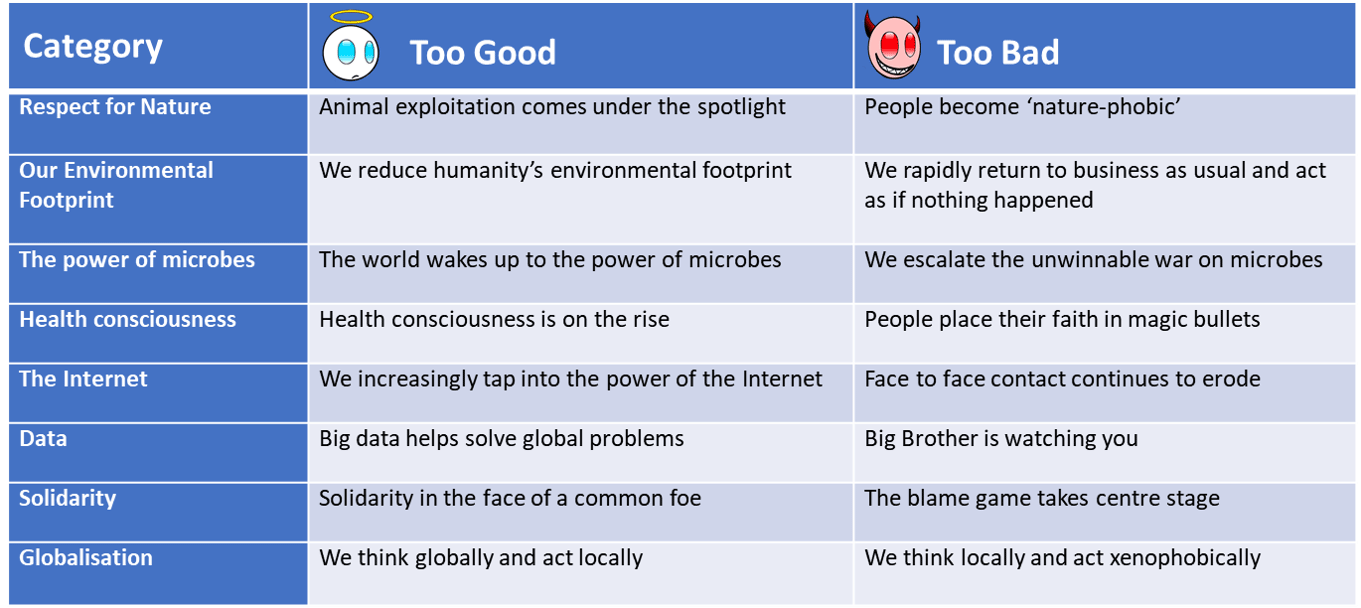
Heat and Ice Therapy: A Powerful Combination for Healing
Heat and Ice Therapy: A Powerful Combination for Healing
Overview
What is heat therapy?
Heat therapy is a popular method for relieving pain and promoting healing. It involves applying heat to the affected area, which helps to increase blood flow, relax muscles, and reduce stiffness. This can be done through various methods, such as using hot packs, warm towels, or taking a warm bath. The heat helps to soothe the pain and discomfort, providing relief and allowing the body to heal. It is important to note that heat therapy should not be used on open wounds or swollen areas, as it can increase inflammation. However, for muscle aches, joint pain, and general relaxation, heat therapy can be a powerful tool. So the next time you're feeling sore or in need of some relaxation, give heat therapy a try!
What is ice therapy?
Ice therapy, also known as cryotherapy, is a popular treatment method used to reduce pain and inflammation. It involves applying ice or a cold pack to the affected area, which helps constrict blood vessels and numb the area. This can provide temporary relief and help speed up the healing process. Ice therapy is commonly used for acute injuries, such as sprains, strains, and bruises. It can also be beneficial for chronic conditions, like arthritis or tendonitis. So, if you're dealing with any kind of pain or swelling, grab an ice pack and give ice therapy a try!
Why combine heat and ice therapy?
Combining heat and ice therapy can be a game-changer when it comes to healing. It may sound contradictory, but these two therapies actually work together to provide maximum benefits. Heat therapy helps to increase blood flow and relax muscles, while ice therapy reduces inflammation and numbs pain. By alternating between heat and ice, you can effectively reduce swelling, relieve pain, and speed up the healing process. So, why choose between heat or ice when you can have the best of both worlds? Give this powerful combination a try and experience the difference it can make in your healing journey.
Benefits of Heat Therapy

Relieves muscle pain and stiffness
Heat and ice therapy is a powerful combination that can effectively relieve muscle pain and stiffness. When used together, these two therapies work synergistically to provide quick and lasting relief. Heat therapy helps to relax muscles, increase blood flow, and reduce inflammation, while ice therapy numbs the area, reduces swelling, and alleviates pain. Whether you're dealing with a minor muscle strain or recovering from a strenuous workout, incorporating heat and ice therapy into your routine can help speed up the healing process and get you back on your feet in no time.
Increases blood flow
Heat and ice therapy is a powerful combination for healing. When it comes to increasing blood flow, these two treatments can work wonders. Heat therapy, such as using a heating pad or taking a warm bath, helps to dilate blood vessels and improve circulation. On the other hand, ice therapy, like applying an ice pack or taking a cold shower, constricts blood vessels and reduces inflammation. By alternating between heat and ice, you can stimulate blood flow and promote healing in the affected area. So, if you're looking to boost blood circulation, don't underestimate the power of heat and ice therapy!
Promotes relaxation and stress relief
Heat and ice therapy is not only effective for physical healing, but it also promotes relaxation and stress relief. By applying heat to sore muscles or joints, you can help increase blood flow and relax tense muscles. This can provide a soothing sensation and help reduce stress. On the other hand, ice therapy can help reduce inflammation and numb pain, which can also contribute to relaxation. Whether you prefer a warm heat pack or a refreshing ice pack, incorporating heat and ice therapy into your routine can be a powerful combination for promoting relaxation and relieving stress.
Benefits of Ice Therapy

Reduces inflammation and swelling
Heat and ice therapy is a powerful combination that can help reduce inflammation and swelling. When used together, these two therapies work synergistically to provide effective relief. Heat therapy, such as using a heating pad or warm towel, helps to increase blood flow to the affected area, promoting healing and relaxation. On the other hand, ice therapy, like applying an ice pack or cold compress, helps to constrict blood vessels and reduce swelling. By alternating between heat and ice, you can stimulate circulation, decrease inflammation, and alleviate pain. This dynamic duo is a go-to solution for athletes, individuals with chronic pain, and anyone looking for natural and effective relief from inflammation and swelling.
Numbs pain and reduces nerve activity
Heat and ice therapy is a powerful combination for healing that can effectively numb pain and reduce nerve activity. When applied to the affected area, heat therapy helps to increase blood flow, relax muscles, and relieve stiffness. On the other hand, ice therapy works by constricting blood vessels and reducing inflammation, which can help to alleviate swelling and pain. Together, these two therapies provide a one-two punch for managing pain and promoting healing. So the next time you're dealing with pain, consider using heat and ice therapy to find relief.
Helps with acute injuries and post-workout recovery
Heat and ice therapy is a powerful combination that can greatly help with acute injuries and post-workout recovery. Whether you've sprained your ankle or pulled a muscle, applying heat and ice can provide immense relief and speed up the healing process. Heat therapy helps to increase blood flow to the injured area, promoting relaxation and reducing muscle stiffness. On the other hand, ice therapy helps to reduce inflammation and swelling, numbing the area and providing pain relief. By alternating between heat and ice, you can effectively manage pain and promote healing. So, the next time you experience an acute injury or intense workout soreness, remember to grab your ice pack and heating pad for a powerful healing combination!
How to Use Heat Therapy

Hot packs and heating pads
Hot packs and heating pads are commonly used for pain relief and relaxation. They provide a soothing warmth that helps to relax muscles and increase blood flow to the affected area. This increased blood flow can help to reduce inflammation and promote healing. Hot packs and heating pads can be used to treat a variety of conditions, including muscle strains, arthritis, and menstrual cramps. They are easy to use and can be applied directly to the skin. For best results, it is recommended to use hot packs or heating pads for about 15-20 minutes at a time. However, it is important to avoid using them on open wounds or areas of broken skin.
Warm baths and showers
Warm baths and showers are not only relaxing, but they can also provide therapeutic benefits. The heat from the water helps to increase blood circulation, which can promote healing and reduce muscle tension. It can also help to soothe sore muscles and joints, providing relief from pain and inflammation. Taking a warm bath or shower can be a great way to unwind after a long day and can help to improve overall well-being. So go ahead, indulge in a warm soak and let the healing powers of heat work their magic!
Heat wraps and patches
Heat wraps and patches are popular options for providing targeted heat therapy to specific areas of the body. These products are designed to deliver consistent and controlled heat, helping to relax muscles, increase blood flow, and reduce pain and stiffness. Heat wraps and patches are convenient and easy to use, making them a great choice for on-the-go relief. Whether you're dealing with muscle soreness, joint pain, or menstrual cramps, heat wraps and patches can provide soothing and comforting heat therapy that can help you feel better. So, the next time you're in need of some heat therapy, consider using heat wraps or patches for a powerful combination of healing and relaxation.
How to Use Ice Therapy

Ice packs and cold compresses
Ice packs and cold compresses are essential tools for reducing inflammation and relieving pain. When applied to an injured or sore area, the cold temperature helps to constrict blood vessels, which can decrease swelling and numb the area. This can provide immediate relief and promote faster healing. Additionally, the cold sensation can also help to numb any pain or discomfort, making it easier to move and function. Whether you're recovering from a sports injury or dealing with everyday aches and pains, ice packs and cold compresses are a powerful combination for healing.
Ice baths and cold showers
Ice baths and cold showers are two popular forms of cold therapy that have been used for centuries to promote healing and recovery. While they may seem intimidating at first, these icy treatments can provide a multitude of benefits for the body. The shock of the cold water helps to constrict blood vessels, reducing inflammation and swelling. This can be especially helpful for athletes or those recovering from injuries, as it can speed up the healing process and alleviate pain. Additionally, cold therapy can also improve circulation and boost the immune system, leading to an overall sense of well-being. So, if you're looking for a natural and effective way to enhance your recovery, don't be afraid to take the plunge into ice baths and cold showers!
Cold therapy machines
Cold therapy machines are a game-changer when it comes to reducing pain and inflammation. These innovative devices use the power of cold therapy to provide targeted relief to sore muscles and joints. Whether you're recovering from an injury or dealing with chronic pain, cold therapy machines can help speed up the healing process and alleviate discomfort. With their easy-to-use design, you can simply strap on the machine and let it work its magic. Say goodbye to traditional ice packs and hello to the convenience of cold therapy machines!
Combining Heat and Ice Therapy

Alternating heat and ice
Alternating heat and ice therapy is a game-changer when it comes to healing. It's like a one-two punch that kicks pain and inflammation to the curb. Heat therapy helps to relax muscles, increase blood flow, and promote healing. On the other hand, ice therapy reduces swelling, numbs the area, and provides instant relief. By alternating between heat and ice, you get the best of both worlds. It's like a hot and cold dance party for your body. So, next time you're dealing with an injury or sore muscles, give the power combo of heat and ice therapy a try. Your body will thank you!
Using heat before ice
Heat therapy is a great way to relax and soothe sore muscles. By applying heat to the affected area, you can increase blood flow and promote healing. It's best to use heat therapy before applying ice, as it helps to loosen up tight muscles and prepare them for the cold treatment. Heat therapy can be applied in various forms, such as hot packs, warm towels, or even a warm bath. So the next time you're feeling achy, give heat therapy a try before reaching for the ice.
Using ice before heat
Using ice before heat is a key strategy for maximizing the benefits of heat and ice therapy. When you apply ice to an injury or sore muscle, it helps to reduce inflammation and numb the area, providing immediate relief. This can be especially helpful in the early stages of an injury or when dealing with acute pain. After using ice, applying heat can further promote healing by increasing blood flow to the area and relaxing the muscles. Heat therapy also helps to soothe any lingering discomfort and can be particularly effective for chronic pain. By using ice before heat, you can harness the power of both therapies to speed up recovery and alleviate pain.
Conclusion

Heat and ice therapy can be a powerful combination for healing
Heat and ice therapy can be a powerful combination for healing. When it comes to treating injuries and reducing pain, using heat and ice together can provide effective results. Heat therapy helps to increase blood flow, relax muscles, and promote healing. On the other hand, ice therapy helps to reduce inflammation, numb the area, and alleviate pain. By alternating between heat and ice, you can take advantage of the benefits of both therapies. For example, you can start with heat therapy to warm up the muscles and increase blood circulation, then switch to ice therapy to reduce swelling and pain. This combination can accelerate the healing process and provide relief from discomfort. So, the next time you're dealing with an injury or experiencing pain, consider using heat and ice therapy together for a powerful and effective treatment.
Consult a healthcare professional for personalized advice
When it comes to heat and ice therapy, it's always a good idea to consult a healthcare professional for personalized advice. They can assess your specific condition and recommend the best course of treatment. Whether you're dealing with an injury, inflammation, or muscle soreness, a healthcare professional can provide guidance on when to use heat or ice, how long to apply each therapy, and any precautions you should take. Remember, everyone's body is unique, so what works for one person may not work for another. By seeking professional advice, you can ensure that you're using heat and ice therapy effectively and safely.
Listen to your body and adjust the therapy as needed
When it comes to heat and ice therapy, it's important to listen to your body and adjust the therapy as needed. Your body knows best what it needs to heal and recover. If you're feeling too much discomfort or if the therapy is not providing any relief, don't hesitate to make changes. You can try alternating between heat and ice, or adjusting the duration and intensity of the therapy. Remember, the goal is to find what works best for you and your body. So, be open to experimenting and don't be afraid to make adjustments along the way.


